Diy Decoration: How to Repurpose Old Ladders
Have you ever looked at an old ladder and thought it was just taking up space in your garage or shed? Well, it's time to change that perception! Repurposing old ladders is not only a fantastic way to breathe new life into something that might otherwise be discarded, but it also adds a unique touch to your home decor. Imagine walking into your living room and spotting a beautifully transformed ladder that serves as a bookshelf or a plant stand. Sounds intriguing, right? In this article, we will explore creative ways to repurpose those old ladders into stunning decor items that reflect your style while promoting sustainability. Let's dive in!
When it comes to repurposing ladders, the first step is understanding the various types available. There are step ladders, extension ladders, and even folding ladders, each with its own potential uses. For instance, a sturdy wooden step ladder can be an excellent choice for creating shelves, while a metal extension ladder might be better suited for outdoor projects. Think about the aesthetics you want to achieve in your home. A rustic wooden ladder can add warmth and charm, while a sleek metal ladder can give a more modern feel. By choosing the right ladder, you ensure that your DIY project is both functional and visually appealing.
Before you can transform your ladder into a masterpiece, it's essential to clean and prepare it properly. This step is crucial as it sets the foundation for your creative endeavors. Start by removing any dirt, dust, or cobwebs that may have accumulated over the years. A simple mixture of soap and water will do the trick. Once cleaned, inspect your ladder for any damage or wear. If it's in rough shape, don't worry! With a little effort, you can restore it to its former glory.
One of the first tasks in preparing your ladder is to remove any old paint or rust. This process not only enhances the appearance but also prolongs the ladder's life. You can achieve this through several techniques:
- Using Chemical Strippers: These can effectively remove layers of paint. Just be sure to follow the instructions carefully, wear protective gear, and work in a well-ventilated area.
- Sandblasting Techniques: For those who prefer a more industrial approach, sandblasting can clean surfaces efficiently. While it requires specific equipment, the results can be stunning.
Whichever method you choose, the goal is to achieve a smooth surface that will be ready for painting or finishing.
Now that your ladder is clean and ready, it’s time to think about the finish. The right finish can dramatically change the look of your ladder, making it a standout piece in your home. You have several options:
- Paint: A bold color can make your ladder pop.
- Stain: This enhances the wood's natural beauty while providing a protective layer.
- Natural Finishes: If you want to keep it simple, a clear coat can preserve the original look of the ladder.
Consider your existing decor and choose a finish that complements your style.
With your ladder cleaned and finished, it’s time to get creative! There are endless possibilities when it comes to repurposing old ladders. Here are a couple of innovative ideas:
Transforming an old ladder into a shelf can add unique storage solutions to your space. Imagine a rustic ladder leaning against your wall, adorned with books, plants, or decorative items. To secure shelves, you can use wooden planks cut to size and attach them to the rungs of the ladder using brackets or screws. Arrange your decor items in a way that tells a story, mixing heights and textures for an eye-catching display.
An old ladder can also be repurposed into a charming plant stand. Picture this: an old wooden ladder, now a vibrant green with pots of flowers cascading down its rungs. Arrange pots of varying sizes and colors to create a stunning centerpiece for your patio or garden. This not only elevates your plants but also adds a creative flair to your outdoor space.
While repurposing ladders can be fun, safety is paramount. Always take necessary precautions when working with tools and materials. Make sure you have the right tools on hand, such as a drill, saw, and safety gear like gloves and goggles. Understanding the stability and weight limits of your ladder is vital. Be sure to check the manufacturer's guidelines and ensure your repurposed ladder can safely hold the items you plan to display.
Having the right tools is crucial for any DIY project. Essential tools for ladder repurposing include:
- Drill
- Saw
- Sandpaper
- Paintbrushes
Equipping yourself with these tools will help ensure your project goes smoothly.
Understanding the stability and weight limits of your ladder is vital. Always check for any signs of wear and tear, and ensure that it is stable enough for its intended use. If you’re using it as a shelf, make sure it can hold the weight of your decor items without wobbling.
Q: Can I use any type of ladder for repurposing?
A: While most ladders can be repurposed, wooden and metal step ladders are the most versatile options for home decor projects.
Q: How do I ensure my repurposed ladder is safe?
A: Always check for stability, weight limits, and any signs of damage before using your repurposed ladder for storage or display.
Q: What tools do I need for repurposing a ladder?
A: Essential tools include a drill, saw, sandpaper, and paintbrushes, depending on your specific project.
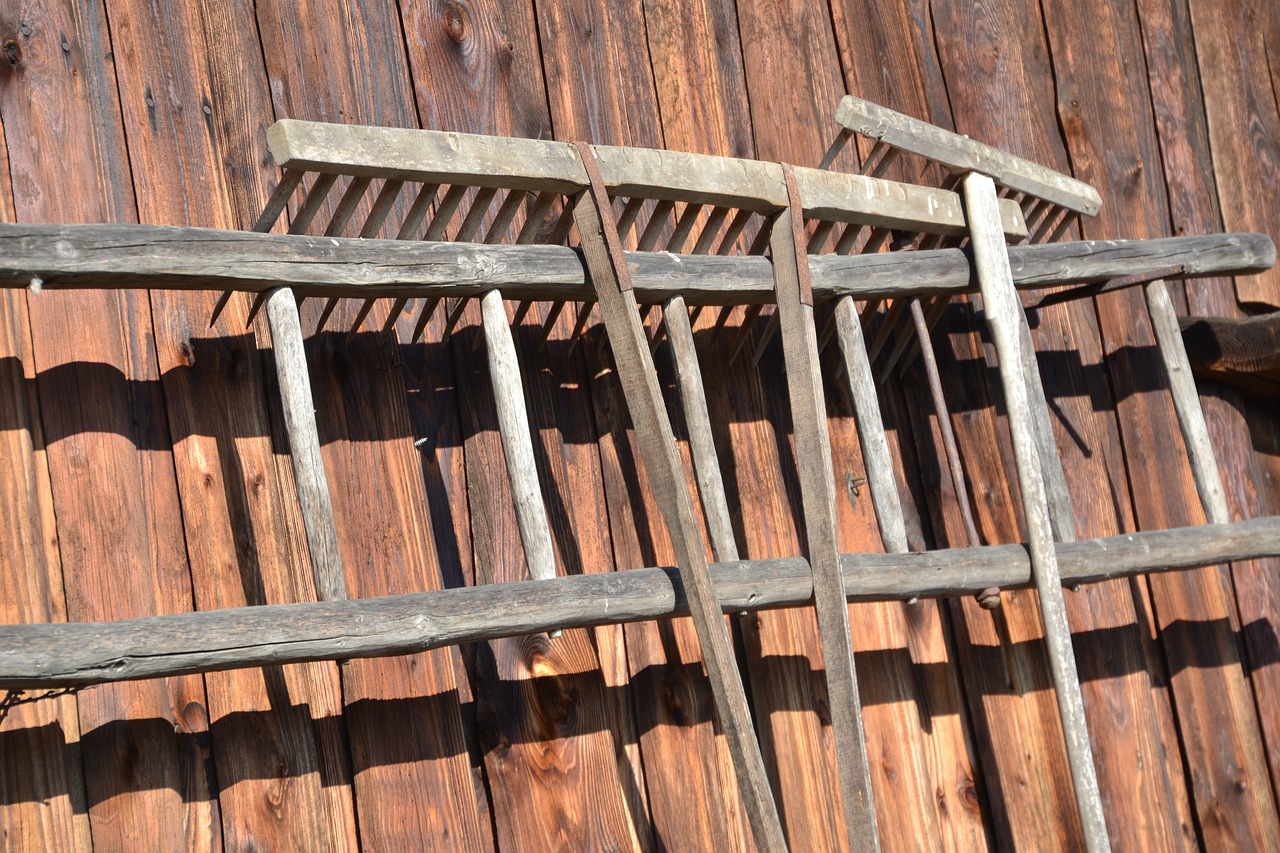
Choosing the Right Ladder
When it comes to repurposing old ladders, the first step is to choose the right ladder for your project. Not all ladders are created equal, and understanding the various types available can significantly impact the functionality and aesthetic appeal of your DIY creation. Whether you're looking for something rustic, modern, or somewhere in between, the ladder you select can set the tone for your entire decor. Think of it like picking the perfect frame for a beautiful painting; the right choice can elevate the entire piece.
There are several types of ladders to consider, each with its unique characteristics and potential uses:
- Step Ladders: These are versatile and stable, making them great for small shelving units or plant stands. Their wide base provides excellent support, which is crucial for functional decor.
- Extension Ladders: While typically used for reaching high places, these can be creatively repurposed into tall shelving units or decorative displays. Their height can draw the eye upward, making any room feel larger.
- Folding Ladders: Compact and easy to store, folding ladders can be transformed into unique wall decor or even a quirky bookshelf that can be tucked away when not in use.
When selecting your ladder, consider its material as well. Wooden ladders offer a rustic charm and can be easily painted or stained to match your decor. Metal ladders, on the other hand, provide a more industrial look and are often more durable, making them suitable for outdoor use. Additionally, think about the height and weight capacity of the ladder. You want to ensure that it can safely hold whatever items you plan to display or store on it.
Once you've narrowed down your choices, it's time to evaluate the condition of the ladder. Look for signs of wear, such as cracks, rust, or peeling paint. A ladder in good condition not only looks better but is also safer for your DIY projects. If you find a ladder that has seen better days, don't worry! With a little elbow grease and creativity, you can restore it to its former glory. Remember, the goal is to find a ladder that not only serves its purpose but also adds a unique touch to your home decor.
In summary, choosing the right ladder is about balancing functionality with aesthetic appeal. Take your time to explore different options, consider your space and style, and don't hesitate to think outside the box. The right ladder can be the centerpiece of your DIY project, transforming your living space into something truly special.

Cleaning and Preparing Your Ladder
Before diving into the exciting world of DIY decoration, it's crucial to take a moment to clean and prepare your ladder. This step not only ensures that your ladder looks its best but also helps in making it safe and functional for your creative projects. Think of this process as giving your ladder a fresh start, much like a blank canvas awaiting a masterpiece. The first step is to assess the condition of your ladder. Is it covered in layers of old paint? Are there signs of rust? Understanding what you're working with will guide you in the cleaning process.
Once you have evaluated your ladder, it's time to roll up your sleeves and get to work. Start by removing any loose dirt or debris using a soft brush or cloth. This simple action can make a significant difference in how your ladder looks. If your ladder has been outside, it might have accumulated some stubborn grime. In this case, a mixture of warm water and mild detergent can work wonders. Use a sponge or cloth to scrub the surfaces, ensuring you reach all the nooks and crannies.
After the initial cleaning, the next step is to tackle any old paint and rust that may be clinging to your ladder. For this, you have a couple of options. You can choose to use chemical strippers or sandblasting techniques, depending on the severity of the paint and rust. Both methods can effectively prepare your ladder for its new life as a decorative piece. If you opt for chemical strippers, remember to follow the manufacturer's instructions carefully. Always work in a well-ventilated area, and protect your skin and eyes with appropriate gear.
When it comes to removing old paint and rust, the goal is to achieve a smooth surface that will allow for a beautiful finish. If you're leaning towards chemical strippers, make sure to select a product that is safe for the type of material your ladder is made from. Apply the stripper according to the instructions, allowing it to sit for the recommended time, and then gently scrape off the softened paint with a putty knife. This method can be quite effective but does require patience.
On the other hand, if you're looking for a more industrial approach, sandblasting can be an excellent choice. Sandblasting involves using a high-pressure stream of abrasive material to remove paint and rust from the surface. While this method can be highly effective, it does require specific equipment and safety precautions. If you're unfamiliar with sandblasting, it might be worth consulting with a professional to ensure the best results.
Once your ladder is clean and free of old paint and rust, the next step is to choose a finish that complements your home decor style. This could range from a sleek, modern paint to a rustic stain that highlights the wood's natural beauty. Remember, the finish you select can dramatically change the look and feel of your repurposed ladder. Take some time to explore different options, and don't hesitate to test a few samples on a small area first. This will help you visualize how the finish will look once applied.
In summary, cleaning and preparing your ladder is a vital step in the repurposing process. By taking the time to properly clean, remove old paint and rust, and choose an appropriate finish, you set the stage for a stunning transformation. So grab your cleaning supplies, put on some music, and enjoy the process of bringing new life to your old ladder!
Q: Do I need special tools to clean my ladder?
A: While basic cleaning supplies like sponges and brushes are sufficient, you may need additional tools like a putty knife for scraping paint or sandblasting equipment for heavy-duty cleaning.
Q: How can I safely use chemical strippers?
A: Always read the instructions carefully, wear protective gear, and work in a well-ventilated area to ensure your safety.
Q: What type of finish should I choose for my ladder?
A: The finish depends on your personal style. Consider paint for a modern look, stain for a rustic feel, or a natural finish to showcase the wood's beauty.

Removing Old Paint and Rust
When it comes to repurposing your old ladder, one of the most crucial steps is . Not only does this help in achieving a smooth surface for your DIY project, but it also enhances the overall appearance and longevity of your ladder. Think of this process as giving your ladder a fresh start, much like a new coat of paint on an old wall. So, how do you tackle this task effectively? Let's dive into some techniques that can help you transform your ladder into a beautiful decor piece.
First off, you might want to consider using chemical strippers. These products are designed to break down layers of paint, making it easier to wipe them away. When using chemical strippers, always follow the manufacturer's instructions closely. It's essential to use them in a well-ventilated area and wear protective gear, such as gloves and goggles, to avoid any skin or eye irritation. The process typically involves applying the stripper with a brush, allowing it to sit for a specified time, and then scraping the paint off with a putty knife. This method can be very effective but requires a bit of patience.
For those who prefer a more hands-on approach, sandblasting is another option worth considering. This technique uses high-pressure air to blast abrasive materials against the surface, effectively removing paint and rust without damaging the underlying wood. It’s like giving your ladder a spa day! However, sandblasting does require specialized equipment, so it may not be the best choice for everyone. If you're intrigued by this method, you might want to look into local services that offer sandblasting, or consider renting equipment if you're planning multiple projects.
Regardless of the method you choose, it's essential to keep an eye on the condition of the wood. After removing the paint and rust, inspect the ladder for any signs of damage or rot. If you notice any soft spots, you may need to reinforce those areas or even replace sections of the wood before proceeding. This step is crucial to ensure that your repurposed ladder is not only beautiful but also safe for use.
After you've successfully stripped away the old paint and rust, the next step is to prepare your ladder for its new life. This might involve sanding the surface to smooth out any rough patches left behind. A light sanding can make a world of difference, giving your ladder a polished look. It's like putting the final touches on a masterpiece!
In summary, removing old paint and rust from your ladder is a vital step in the repurposing process. By using chemical strippers or sandblasting techniques, you can restore your ladder to its former glory. Just remember to take the necessary safety precautions and inspect the wood for any damage. With a little effort, your old ladder can become a stunning addition to your home decor.
- What type of chemical stripper should I use? Choose a stripper that is safe for wood surfaces and follow the instructions carefully.
- Can I use sandblasting on all types of ladders? Sandblasting is best for sturdy ladders made from solid wood; avoid it on fragile or thin materials.
- How do I know if my ladder is too damaged to repurpose? Look for signs of rot, severe splintering, or instability; if in doubt, consult a professional.
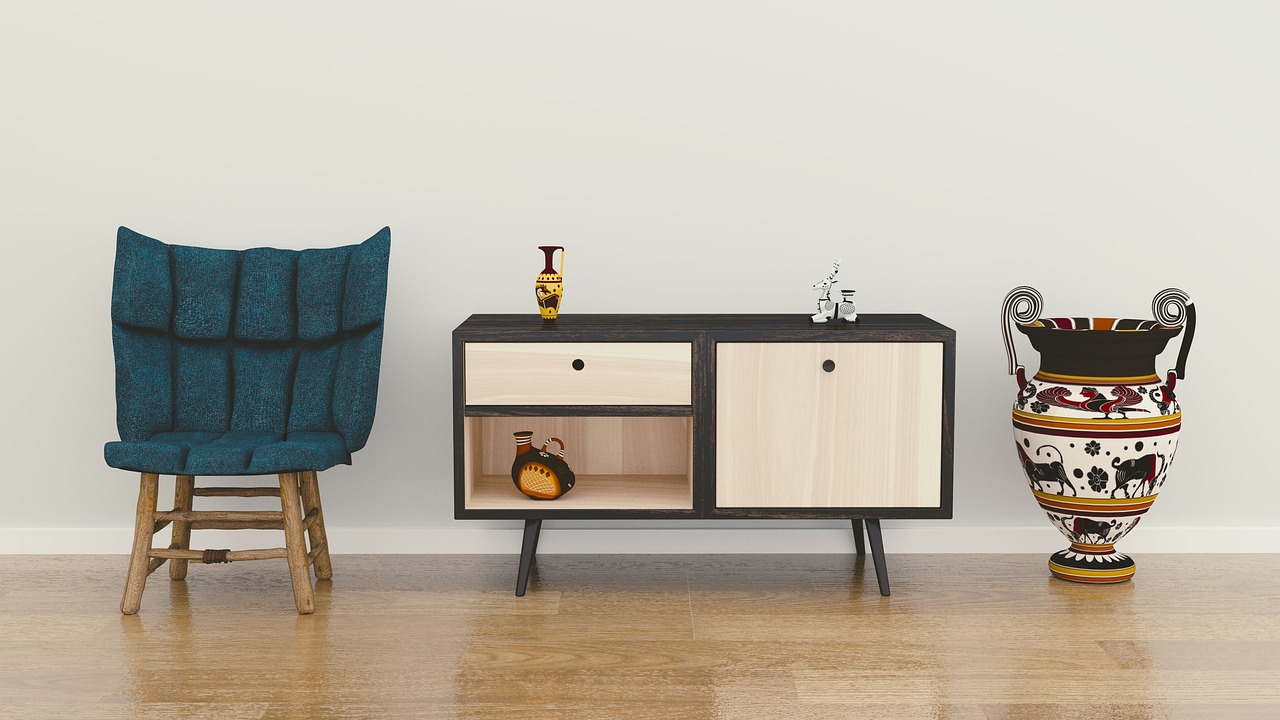
Using Chemical Strippers
When it comes to giving your old ladder a fresh start, chemical strippers can be a game-changer. These potent solutions are designed to effectively remove layers of paint and varnish, revealing the beautiful wood or metal beneath. However, before diving into this process, it’s essential to understand how to use these products safely and effectively to achieve the best results.
First and foremost, always work in a well-ventilated area. Chemical strippers can emit strong fumes that may be harmful if inhaled. Wearing protective gear, such as gloves and goggles, is non-negotiable. This not only keeps you safe but also ensures that you can work without worry. Once you have your safety gear on, it’s time to prepare your ladder for stripping.
Apply the chemical stripper generously to the surface of the ladder using a brush. It's important to follow the manufacturer’s instructions regarding application thickness and wait time. Some strippers require only a few minutes to work, while others may need to sit for several hours. As the stripper begins to dissolve the paint, you’ll notice the old layers bubbling up, which is a clear sign that it’s doing its job.
Once the paint has lifted, use a scraper to gently remove the loosened paint. Be careful not to gouge the wood or damage the metal; a light touch goes a long way. After scraping, rinse the ladder with water to remove any residual stripper and paint. This step is crucial as it prepares your ladder for the next phase of your DIY project.
Here’s a quick overview of the steps involved in using chemical strippers:
- Safety First: Wear gloves and goggles, and ensure good ventilation.
- Apply Stripper: Use a brush to apply the chemical stripper generously.
- Wait: Allow the stripper to work for the recommended time.
- Scrape Off Paint: Gently remove the loosened paint with a scraper.
- Rinse: Clean the ladder with water to remove any residue.
By following these steps, you can ensure that your ladder is not only stripped of its old paint but is also ready for a beautiful transformation. Remember, patience is key here! Taking the time to do it right will pay off when you see the stunning results of your hard work.

Sandblasting Techniques
When it comes to giving your old ladder a fresh start, sandblasting is a technique that can work wonders. This method uses high-pressure air to propel sand or other abrasive materials against the surface of the ladder, effectively removing old paint, rust, and grime. It's akin to giving your ladder a spa day, stripping away the years of wear and tear to reveal the beautiful wood or metal underneath. But before you dive into this DIY adventure, there are a few key points to consider.
First, let’s talk about the equipment you’ll need. A sandblaster is the star of the show, but you’ll also require a suitable compressor to provide the necessary air pressure. Additionally, protective gear is a must; think goggles, gloves, and a mask to shield yourself from flying debris. Safety first, right? After all, you want to enjoy your DIY project without any unfortunate incidents!
Once you have your equipment ready, it’s time to set up your workspace. Choose an outdoor area or a well-ventilated garage, as sandblasting can create quite a mess. Lay down a tarp to catch the dust and debris, making cleanup easier. Here’s a pro tip: use a blast cabinet if you have one, as it helps contain the mess and keeps your workspace tidy.
Now, let’s get into the nitty-gritty of sandblasting techniques. Start by adjusting the pressure on your compressor; typically, a range of 60 to 100 psi is ideal for most projects. Test the sandblaster on a small, inconspicuous area of the ladder to ensure you’re comfortable with the settings. You want to avoid damaging the wood or metal, so take it slow and steady. Move the nozzle in a consistent, sweeping motion, keeping it about 6 to 12 inches away from the surface. This distance helps to prevent any gouging or uneven spots.
After you’ve blasted away the old paint and rust, it’s important to clean the surface thoroughly. Use a soft brush or compressed air to remove any leftover dust or debris. This step is crucial because any remnants can interfere with the finishing process. Once your ladder is clean, you’ll be amazed at how much better it looks, ready for its next chapter as a stylish decor piece in your home.
In summary, sandblasting can be a fantastic way to rejuvenate your old ladder, but it requires the right tools, safety precautions, and technique. With a little practice, you’ll be able to transform your ladder into a stunning centerpiece that showcases your creativity and commitment to sustainability.
- What type of sand should I use for sandblasting?
Using fine silica sand is common, but you can also opt for alternatives like glass beads or aluminum oxide, which may be gentler on the surface.
- Can I sandblast indoors?
It's not recommended to sandblast indoors due to the dust and debris it creates. Always work in a well-ventilated area.
- How long does sandblasting take?
The time it takes depends on the condition of the ladder and the size of the area being blasted. Typically, it can take anywhere from a few minutes to an hour.
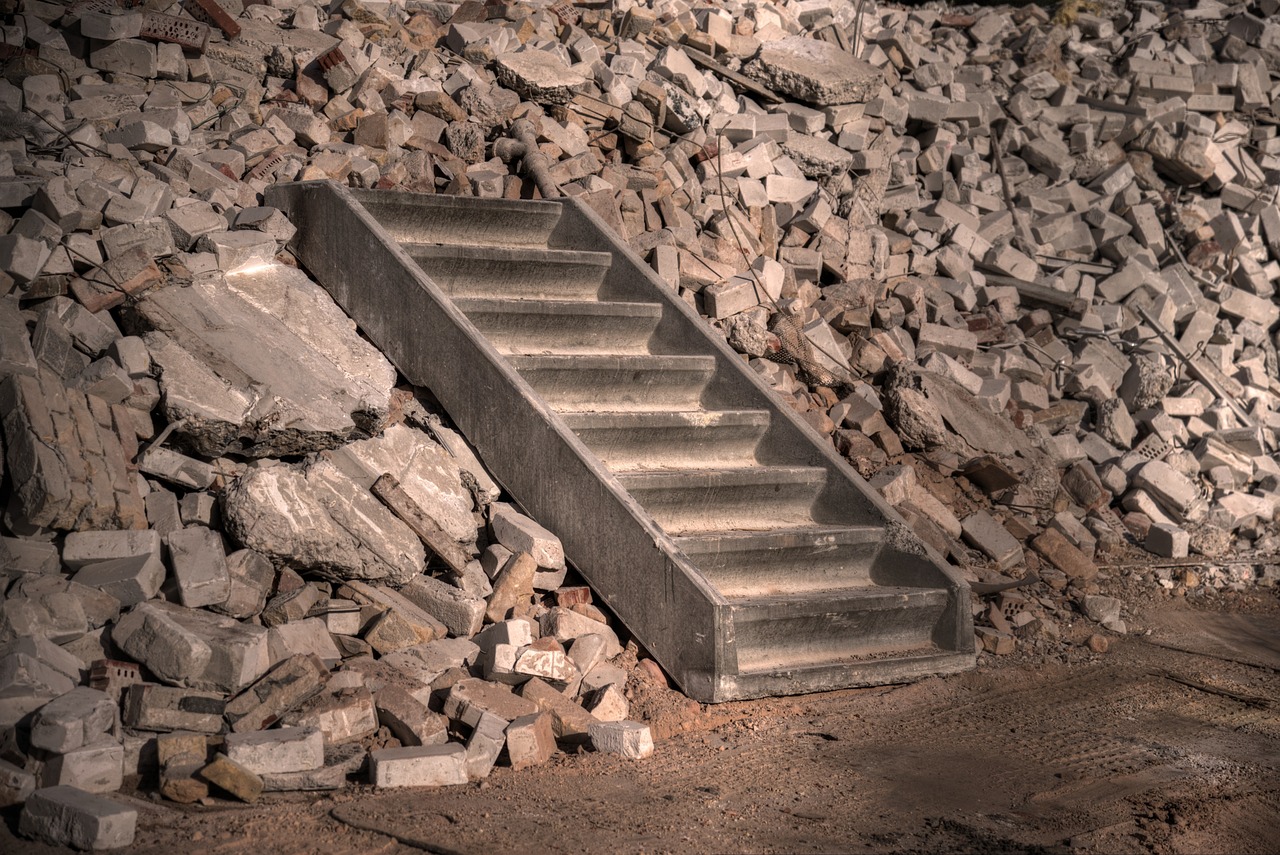
Choosing a Finish
When it comes to giving your old ladder a fresh new look, choosing the right finish is crucial. The finish not only enhances the aesthetic appeal but also protects the wood from wear and tear. Think of it as dressing up your ladder for a special occasion; the right outfit can make all the difference! So, what are your options? Let's dive into some popular finishes that can transform your ladder into a stunning decor piece.
First off, you have paint. This is a fantastic option if you want to add a splash of color to your space. Whether you go for a bold hue or a soft pastel, paint can really make your ladder stand out. Just imagine a bright yellow ladder against a neutral wall—talk about a conversation starter! When painting, make sure to use a primer first for better adhesion and longevity.
If you're more inclined towards a natural look, then stains might be your best bet. Stains allow the natural grain of the wood to shine through while adding a warm tone. This is perfect for rustic or farmhouse-style decor. You can choose from a variety of stain colors, ranging from light oak to deep walnut, depending on the vibe you want to create.
For those who appreciate a more minimalist approach, a clear finish can be a great choice. This option preserves the original look of the ladder while providing protection against scratches and moisture. A clear polyurethane or varnish can give your ladder a sleek, polished appearance without altering its natural beauty.
Now, let’s break down some key factors to consider when selecting a finish:
- Durability: Consider how much wear and tear your ladder will face. If it’s going to be used outdoors or in high-traffic areas, opt for a more durable finish.
- Color: Think about the color scheme of your room. Will the finish complement your existing decor?
- Application: Some finishes are easier to apply than others. If you’re a DIY newbie, you might want to stick with simpler options.
In summary, the finish you choose for your repurposed ladder can dramatically change its look and functionality. Whether you opt for a vibrant paint, a rich stain, or a clear protective coat, take your time to select a finish that resonates with your personal style and complements your home. Remember, a little bit of creativity goes a long way in making your space uniquely yours!
Q: How do I prepare my ladder before applying a finish?
A: Make sure to clean your ladder thoroughly, removing any dirt, dust, or old finishes. Sand the surface lightly to ensure better adhesion of the new finish.
Q: Can I use outdoor finishes for indoor ladders?
A: While outdoor finishes are designed to withstand harsher conditions, they can also be used indoors. Just be mindful of strong odors and drying times.
Q: How long does it take for the finish to dry?
A: Drying times can vary based on the type of finish used. Generally, water-based finishes dry faster than oil-based ones. Always check the manufacturer's instructions for specific drying times.
Q: Is it necessary to apply a primer before painting?
A: Yes, applying a primer can help the paint adhere better and improve the overall finish, especially if you're painting over a previously stained or varnished surface.

Creative Repurposing Ideas
When it comes to DIY decoration, old ladders can be a goldmine of creativity waiting to be unleashed. Instead of letting that dusty old ladder gather cobwebs in the garage, why not breathe new life into it? With a little imagination and effort, your ladder can transform into stunning decor pieces that not only serve a purpose but also tell a story. Let’s dive into some innovative ideas that will inspire you to repurpose your old ladders into functional, eye-catching items that elevate your living space.
One of the most popular ways to repurpose an old ladder is by turning it into shelves. Imagine a rustic ladder leaning against your wall, adorned with your favorite books, plants, or decorative items. To create ladder shelves, simply secure planks of wood between the rungs of the ladder. This not only maximizes vertical space but also adds a unique character to your room. You can choose to paint or stain the wood to match your decor, or leave it natural for a more organic look. The key here is to ensure that the shelves are properly secured, so they can hold the weight of your items without any risk of collapsing.
Another fantastic idea is to create a charming plant stand. Picture this: an old wooden ladder, transformed into a vertical garden that draws the eye and freshens up your space. You can place pots of varying sizes on the rungs, creating a cascading effect that brings greenery into your home. This setup not only saves floor space but also allows you to display your plants in a way that makes them the focal point of the room. Consider using a mix of trailing and upright plants to add depth and interest. Just remember to choose a ladder that can support the weight of the pots and soil, and check for stability before placing your plants on it.
For those with a flair for creativity, why not think outside the box? An old ladder can also be transformed into a stunning display rack for your favorite items. Whether it’s showcasing your collection of vintage hats, displaying family photos, or hanging up your favorite towels in the bathroom, the possibilities are endless. You can add hooks or clips to the rungs for hanging items, or simply lean the ladder against a wall for a casual display. This method not only adds personality to your space but also keeps your belongings organized and easily accessible.
It’s important to note that while repurposing ladders can be a fun and rewarding project, safety should always be a priority. Make sure to inspect your ladder for any damage before starting your project. If you’re planning to use it for weight-bearing purposes, understanding the ladder's stability and weight limits is crucial. This will ensure that your creative endeavors are not only beautiful but also safe for everyday use.
Q: Can I use any type of ladder for repurposing?
A: While most ladders can be repurposed, it’s best to choose wooden or metal ladders that are sturdy and in good condition. Avoid using ladders that are broken or severely rusted, as they may not hold weight safely.
Q: How do I ensure my ladder shelves are secure?
A: To secure your ladder shelves, use strong brackets to attach the shelves to the ladder rungs. Additionally, ensure the ladder is positioned against a wall or secured to prevent it from tipping over.
Q: What types of finishes work best for ladder decor?
A: The best finishes depend on your personal style. You can use paint for a pop of color, stain for a rustic look, or leave it natural for a more organic feel. Just make sure to choose weather-resistant finishes if you plan to use it outdoors.
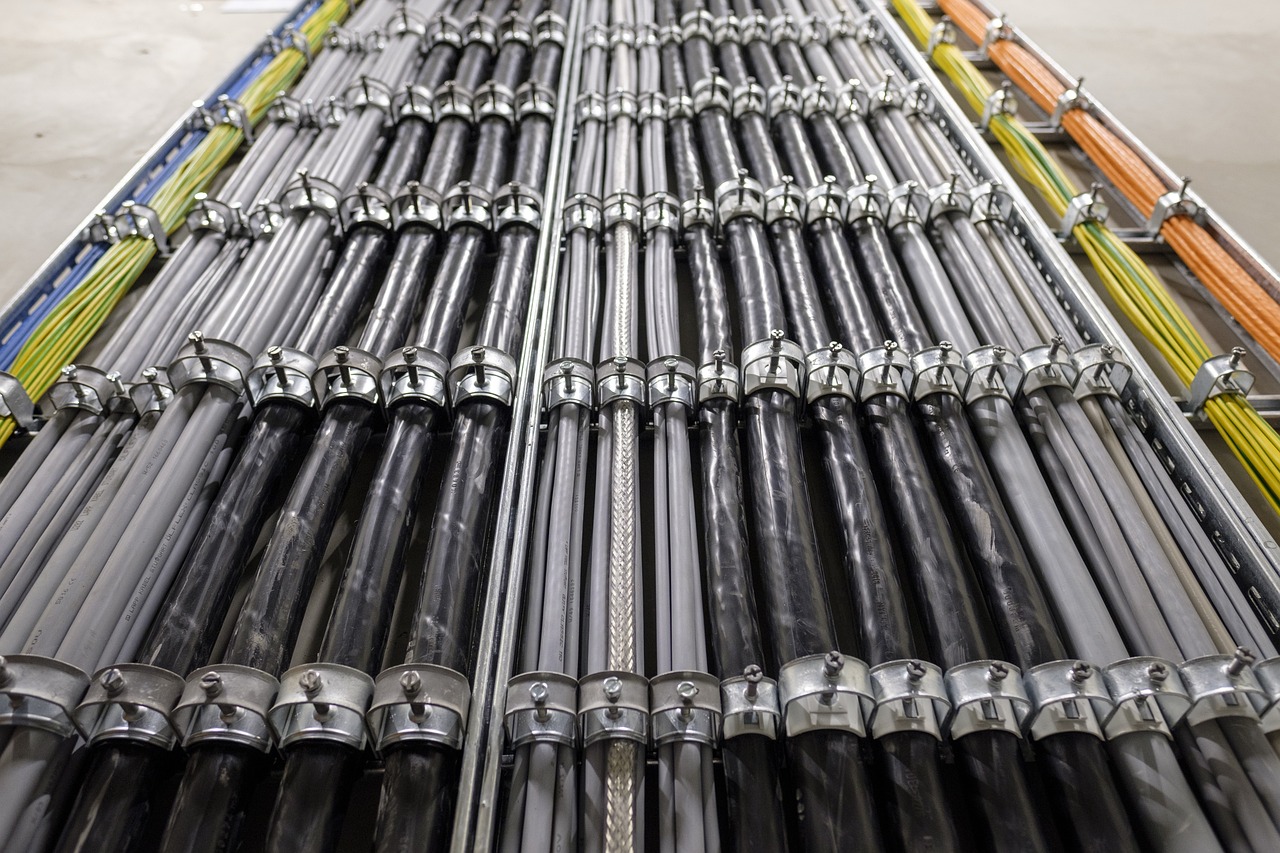
Ladder Shelves
Transforming an old ladder into a shelf is not just a fun DIY project; it's a fantastic way to inject some personality into your living space while also embracing sustainability. Imagine walking into a room and being greeted by a charming, rustic ladder that has been cleverly turned into a stylish shelf. It’s like giving your old ladder a second life, and trust me, it’s easier than it sounds!
To start your journey into ladder shelving, first, consider the size and style of the ladder. A wooden ladder typically offers a more rustic vibe, while a metal ladder can bring a modern touch. Once you have your ladder, you’ll want to secure shelves between the rungs. This is where your creativity can really shine. You can use reclaimed wood for a vintage look or opt for sleek glass for a contemporary feel. The choice is yours!
When it comes to securing the shelves, there are a couple of methods you can employ:
- Brackets: Using brackets can provide additional support, especially if you're planning to place heavier items on the shelves.
- Wood Glue: For a seamless look, wood glue can be used to attach the shelves directly to the ladder rungs, but make sure to allow adequate drying time!
Once your shelves are in place, it’s time to style them! Think about the items you want to display. Books, plants, and decorative items can all find a home on your ladder shelves. You might even consider creating a themed display. For instance, a collection of vintage books paired with some potted succulents can create a cozy reading nook feel. Just remember, balance is key. Arrange your items in a way that draws the eye without overwhelming the space.
Another fun idea is to add some lighting to your ladder shelves. String lights can wrap around the ladder, creating a warm and inviting atmosphere. Alternatively, small LED spotlights can highlight specific items on display, making them pop. This not only enhances the aesthetic but also adds a touch of magic to the room.
In summary, repurposing an old ladder into a shelf is a creative and sustainable way to enhance your home decor. With a little imagination and some basic tools, you can create a stunning piece that reflects your style and personality. So, gather your materials, unleash your creativity, and let your old ladder become a beautiful focal point in your home!
Q: Can I use any type of ladder for this project?
A: While you can use various types of ladders, wooden and metal ladders are the most popular choices for creating shelves due to their stability and aesthetic appeal.
Q: How do I ensure my shelves are secure?
A: Using brackets for heavier items or wood glue for a seamless look can help ensure that your shelves are secure. Always test the stability before placing heavy items on them!
Q: What items should I display on my ladder shelves?
A: You can display a variety of items such as books, plants, decorative pieces, or even artwork. Consider creating a theme to make your display more cohesive.
Q: How can I add lighting to my ladder shelves?
A: String lights or small LED spotlights can be used to create a warm ambiance and highlight your displayed items, enhancing the overall look of your ladder shelves.

Ladder Plant Stand
Transforming an old ladder into a charming plant stand is not just a fantastic way to breathe new life into an unused item; it's also a creative method to showcase your beloved plants. Imagine your favorite greens cascading down the rungs of a rustic ladder, turning an ordinary corner of your home into an enchanting indoor garden. Not only does this DIY project add a touch of personality to your space, but it also promotes sustainability by repurposing something that might otherwise end up in a landfill.
To get started, consider the type of ladder you have. A wooden ladder can bring a warm, rustic vibe, while a metal ladder might lend an industrial feel to your decor. Once you've chosen your ladder, the next step is to decide how to arrange your plants. You can use the rungs of the ladder to hold pots of various sizes, creating a tiered look that draws the eye upward and adds depth to your display.
Here are some tips to keep in mind when creating your ladder plant stand:
- Stability: Make sure your ladder is stable and secure, especially if it will hold heavier pots. You can anchor it to the wall for extra support if needed.
- Plant Selection: Choose plants that thrive in the same light conditions. For instance, if your ladder is in a bright spot, consider placing sun-loving plants like succulents or herbs on the higher rungs.
- Visual Appeal: Mix and match different plant heights and textures. Use trailing plants on the top rungs to create a cascading effect, while larger pots can sit on the lower levels.
Don't forget to add personal touches! You might want to paint the ladder in a color that complements your home or add decorative elements like fairy lights or small hanging ornaments. This way, your plant stand becomes not just a functional piece but also a conversation starter. The beauty of this project lies in its versatility—whether you're going for a boho, rustic, or modern look, you can customize it to fit your style perfectly.
Lastly, remember to regularly check on your plants. Ensure they are getting enough light and water, and consider rotating them occasionally for even growth. With a little creativity and care, your old ladder can become a stunning focal point in your home, bringing nature indoors and showcasing your green thumb!
1. Can any type of ladder be used for a plant stand?
Absolutely! Both wooden and metal ladders can work well. Just make sure the ladder is sturdy enough to hold the weight of your plants.
2. How do I secure the ladder if it wobbles?
You can secure the ladder by anchoring it to the wall or by placing it in a corner. Adding weights to the bottom rungs can also help with stability.
3. What types of plants are best for a ladder plant stand?
Choose plants that thrive in similar lighting conditions, such as succulents, ferns, or trailing vines. Mixing different textures and heights will create a visually appealing display.
4. How do I maintain the plants on my ladder stand?
Regularly check for adequate light, water, and drainage. Rotate your plants occasionally to ensure even growth and health.
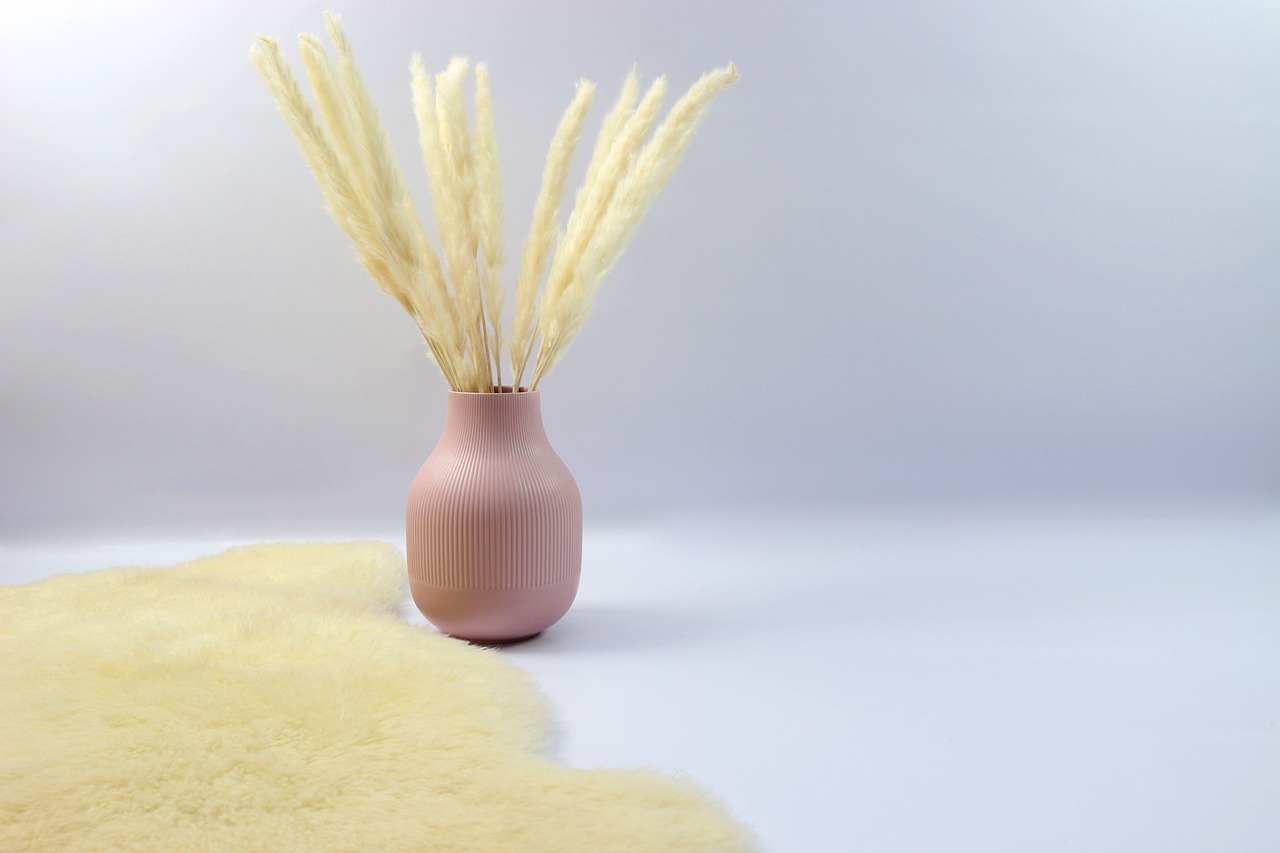
Safety Considerations
When it comes to repurposing old ladders, safety should always be your top priority. After all, you want your DIY project to be both enjoyable and secure. Before you dive into your creative endeavors, it’s crucial to consider a few essential safety tips that will keep you safe while working with tools and materials. Think of safety as the foundation of your project; without it, everything else can come crashing down—literally!
First and foremost, using the right tools can make a world of difference. Imagine trying to cut a piece of wood with a butter knife; it’s just not going to work! Similarly, having the proper tools at your disposal ensures that you can complete your ladder repurposing project efficiently and safely. Here are some tools you might need:
- Power Drill: For securing shelves and other attachments.
- Screwdrivers: Essential for tightening screws and making adjustments.
- Sandpaper or a Sander: To smooth out rough edges.
- Paintbrushes and Rollers: For applying finishes.
- Safety Gear: Such as gloves and goggles to protect yourself.
Next, it’s vital to be aware of the stability and weight limits of your ladder. Just because a ladder looks sturdy doesn’t mean it can handle the weight you plan to place on it. Consider this: if you were to stack a mountain of books on a rickety shelf, you’d probably expect it to collapse. The same principle applies here. Before you start decorating or displaying items on your repurposed ladder, take a moment to assess its condition and stability. Check for any signs of wear and tear, such as:
| Signs of Wear | Action to Take |
|---|---|
| Loose rungs | Reinforce or replace them |
| Splintering wood | Smooth with sandpaper or replace |
| Rust on metal ladders | Remove rust and apply protective coating |
Moreover, when working with chemical strippers or paints, it’s essential to ensure you’re in a well-ventilated area. Think of it as airing out a stinky room; you wouldn’t want to breathe in all those fumes! Proper ventilation helps minimize exposure to harmful chemicals, making your workspace safer. Always read the labels and follow the manufacturer’s instructions to avoid any mishaps.
Lastly, don’t forget to keep your workspace tidy. A cluttered area can lead to accidents, so make it a habit to clean up as you go. It’s like keeping your kitchen organized while cooking; it makes the process smoother and more enjoyable. By following these safety considerations, you can ensure that your ladder repurposing project is not only creative but also secure and enjoyable.
Here are some common questions people have when it comes to repurposing old ladders:
- Can I use any type of ladder for repurposing? Yes, most ladders can be repurposed, but wooden ladders are often preferred for their aesthetic appeal.
- What safety gear should I wear? Always wear gloves, goggles, and a mask when working with chemicals or power tools.
- How do I know if my ladder is stable enough? Check for any damage, loose parts, or signs of wear before placing any weight on it.

Using Proper Tools
When it comes to repurposing an old ladder, having the right tools is not just a luxury; it's a necessity. Imagine trying to bake a cake without the proper utensils—frustrating, right? The same principle applies here. Using the correct tools ensures that your DIY project is not only easier but also safer and more enjoyable. So, what tools do you need to get started on your ladder transformation?
First and foremost, you'll want a good set of screwdrivers. Whether you're tightening screws or disassembling parts of the ladder, having both flathead and Phillips screwdrivers in various sizes will make your life much easier. If you're planning to attach shelves or other decor items to your ladder, a drill is essential. It allows you to create precise holes and fasten items securely, which is crucial for safety.
Next up is the sander. If your ladder has old paint or rough edges, a sander will help you achieve that smooth finish you desire. You can opt for a handheld sander or a sanding block, depending on your comfort level and the size of the ladder. Remember, a smooth surface is not just visually appealing; it also ensures that the finish you apply later adheres properly.
Don’t forget about safety gear! Safety goggles and gloves are a must when working with tools and materials. They protect your eyes from dust and debris and keep your hands safe from splinters and sharp edges. It’s always better to be safe than sorry, especially when you’re in the zone, hammering away at your latest DIY masterpiece.
Lastly, consider having a measuring tape and a level handy. Accuracy is key in any DIY project, and these tools will help you measure dimensions correctly and ensure everything is aligned. A level is particularly important if you're creating shelves or plant stands; you don’t want your plants to be tilting to one side, do you?
Here’s a quick overview of essential tools for your ladder repurposing project:
| Tool | Purpose |
|---|---|
| Screwdrivers | Tightening screws and disassembling parts |
| Drill | Creating holes and fastening items |
| Sander | Achieving a smooth finish |
| Safety Gear | Protecting your eyes and hands |
| Measuring Tape | Ensuring accurate measurements |
| Level | Ensuring items are aligned properly |
In conclusion, investing in the right tools is like laying a strong foundation for a house. It sets the stage for a successful DIY project and helps you avoid potential pitfalls. So, gather your tools, put on your safety gear, and get ready to unleash your creativity on that old ladder!
Q: Can I use any type of ladder for repurposing?
A: While most ladders can be repurposed, wooden ladders tend to offer more aesthetic appeal and versatility for home decor projects.
Q: Do I need to sand the ladder before painting?
A: Yes, sanding is crucial for removing old paint and ensuring a smooth surface, which helps the new paint adhere better.
Q: What safety precautions should I take while working with tools?
A: Always wear safety goggles and gloves, and work in a well-ventilated area. Make sure your workspace is clutter-free to avoid accidents.

Stability and Weight Limits
When it comes to repurposing old ladders, understanding their stability and weight limits is crucial. Imagine your beautifully decorated ladder shelf collapsing under the weight of your favorite books or plants—it’s a nightmare scenario that can easily be avoided with a little forethought. Every ladder has a specific weight capacity, which is determined by its material, design, and condition. Most wooden ladders can safely hold between 200 to 300 pounds, while metal ladders may support even more. However, this doesn’t mean you can load it up without a second thought!
To ensure that your repurposed ladder remains safe and functional, follow these important guidelines:
- Inspect the Ladder: Before starting your project, thoroughly check the ladder for any signs of damage, such as cracks, rust, or loose rungs. A damaged ladder is a potential hazard and should not be used.
- Know the Material: Different materials have different weight capacities. Wooden ladders, while charming, may not be as sturdy as metal ones. Make sure to consider what you’ll be placing on the ladder when selecting the material for your project.
- Calculate Weight Distribution: When arranging items on your repurposed ladder, distribute the weight evenly. Placing heavier items on the bottom and lighter items on the top can help maintain stability.
Additionally, if you’re planning to use your ladder as a shelf or plant stand, consider reinforcing it with brackets or additional supports. This will not only enhance its stability but also prolong its lifespan. If you’re unsure about the weight limits, it’s always better to err on the side of caution. A little bit of extra support can go a long way in ensuring your DIY project is both beautiful and safe.
To give you a better understanding of how different materials compare in terms of weight limits, here’s a small table:
| Material | Weight Capacity (Approx.) |
|---|---|
| Wood | 200 - 300 lbs |
| Aluminum | 300 - 500 lbs |
| Fiberglass | 300 - 600 lbs |
By keeping these factors in mind, you can confidently transform your old ladder into a stunning piece of decor that not only looks great but is also safe for use. Remember, the goal is to blend creativity with practicality, ensuring your home decor is both stylish and secure!
Q: How do I know if my ladder is safe to use?
A: Inspect your ladder for any signs of damage, such as cracks or rust. If it appears structurally sound and meets the weight limits, it should be safe for repurposing.
Q: Can I use a wooden ladder outdoors?
A: Yes, but it’s important to treat the wood with a weather-resistant finish to prevent deterioration from the elements.
Q: What’s the best way to secure items on a ladder shelf?
A: Use brackets or L-braces to secure the shelves to the ladder rungs. This will help keep everything in place and maintain stability.
Q: How can I enhance the stability of my repurposed ladder?
A: Reinforce the ladder with additional supports, distribute weight evenly, and ensure it is placed on a flat surface to prevent tipping.
Frequently Asked Questions
- What types of ladders are best for repurposing?
When it comes to repurposing, wooden ladders are often the most popular choice due to their aesthetic appeal and sturdiness. However, metal ladders can also be transformed into modern decor pieces. Consider the style of your home when choosing the ladder type.
- How do I clean and prepare my old ladder for decoration?
Start by removing any dirt and debris with a damp cloth. If there's old paint or rust, you may need to use chemical strippers or sandblasting techniques. Make sure to sand down rough areas and apply a primer if you’re planning to paint it.
- Can I use my repurposed ladder outdoors?
Absolutely! Just be sure to choose a weather-resistant finish to protect it from the elements. A good outdoor sealant can help maintain its appearance and durability, making it a great addition to your garden or patio.
- What are some creative ideas for using a repurposed ladder?
You can create ladder shelves for stylish storage, a plant stand to showcase your greenery, or even use it as a decorative display for photos and art. The possibilities are endless, and it all depends on your creativity!
- What safety precautions should I take when repurposing a ladder?
Always wear protective gear, such as gloves and goggles, especially when using chemical strippers or power tools. Ensure your workspace is well-ventilated, and check the stability of the ladder before using it for any project to avoid accidents.
- How can I ensure my repurposed ladder is stable?
Make sure to secure shelves properly if you're creating a ladder shelf. Check the weight limits of the ladder and avoid overloading it. If using it as a plant stand, distribute the weight evenly across the rungs.



















